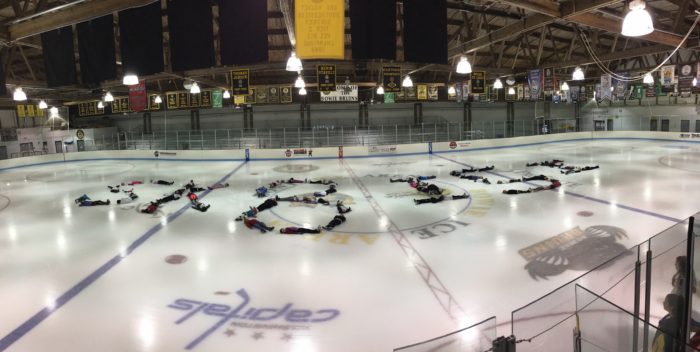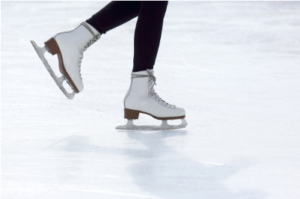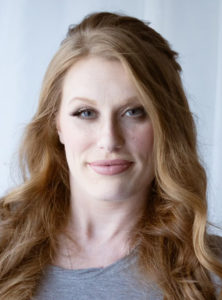Do’s and Don’ts for Figure Skaters Getting Back on the Ice
by Monica Montanari
“This used to be my warm up, and now it’s my nightmare.” Sound familiar?
Whether you’ve taken a break from skating due to COVID-19 or regular life events (or both), getting on the ice after a hiatus can be overwhelming to say the least. Suddenly, your master moves just won’t work — and if you’re anything like me, you’ll be standing there thinking: Did I just throw away all of the progress I had made before?
Fear not. I’m here, especially during these trying days, to give you my failproof guide to getting your feet back under you (literally), no matter how long it’s been or why. And guess what? It’s actually going to end up making you a better skater.
Here are a few of my do’s and don’ts to ensure that happens:
Don’t worry about what other people are thinking. As much as I like to pretend that I don’t care what other people think, if I’m honest with myself, I have to admit that sometimes it does get in my head. Being that we’re humans, it’s natural that we worry about what other people are thinking when they watch us skate.
There are two important things to remember when those thoughts enter your brain: (1) Spectators are really not paying too much attention to you, unless they came specifically to see you skate. If they’re watching you and you don’t know them, call the police. (Just joking — I think.) Everything on ice looks cool to people who don’t skate. (2) No skater should be watching you; they should be busy worrying about their own progress; they’re paying for their ice time, too, so they might as well do something with it.
Don’t beat up on yourself for taking a break. For whatever reason, you needed to leave the ice; knowing when you need a break is part of being a smart athlete. Sometimes, you need a time-out to focus on getting other parts of your life in order. Other times, the stress of skating just calls for a mental health break because you’re burned out. Or maybe you need to give your body time to heal properly from an injury? But perhaps, let’s just say, a worldwide pandemic came out of nowhere, shutting down the entire globe for a solid year, and taking every single ice rink with it — forcing everyone to stay in their homes and live through Zoom meetings!
Whatever the reason, learn to respect your needs. The best athletes take a rest from their sports when they feel it’s needed. Taking a “siesta” is one way you show commitment to your sport. I know it sounds weird, but hear me out: taking a pause from skating implies that you’re coming back — that, in my book, is a victory.
Do build from the basics. Any time one of my skaters returns to the ice after a breather, I take time (often numerous lessons) to go over everything they’ve learned from the beginning. To some of you, this may sound ridiculous, but it will provide you with the opportunity to fine-tune every move you make on the ice while also helping you gain your confidence back as a skater.
I like to begin by going through every single level of the ISI Ice Skating Program, move by move. I don’t care how long you’ve been skating, there is always room for progress on a one-foot glide or a swizzle. Focus on everything! Once your feet are doing things correctly, pay attention to your knees. Think about your arm positioning. How is your back situated? Where are your shoulders and what is your neck doing? Go through every move from every level, taking time to get comfortable again. Think of it this way: You can’t get back to running until you get back to walking.
Don’t rush yourself. Take it slow. Be patient and forgive yourself. You’ll probably trip over your toe pick. You’ll be doing something ridiculously easy and fall. Laugh it off. It’s part of the sport. We all do it.
Do know that some things are going to plague you. Just be ready; expect it. There’s probably going to be one or two specific things that you used to be able to do that aren’t going to reappear until you put in the work. View it as a fun challenge. This is your opportunity to conquer those moves a second time. You already did it once!
P.S. I know these tips work because I’ve walked my skaters through this process many times. More importantly, I know they are successful because I’ve used them following my own return to the ice. During each break I took, when the dust had settled or the mess had been managed, I realized that something was missing from my life — probably the same way that a lot of you have during this pandemic.
Skating is an important piece of my identity and has made me into the person I am. Sometimes it can be a tough sport, but it’s also my foremost love and the source of some of my life’s greatest joys. It has always been my escape and one of the constants in my life.
And time and time again, I’ve realized that no matter where I may go or how often I need a hiatus, I will alway sreturn to it.
There’s an idiom that states: “Fall seven times, stand up eight.” I say: “Take five breaks, return six times.” No matter how long it takes to get back to where you were on the ice, how difficult it is, and how discouraged you may feel, remember that in skating — as with every aspect of life — with just a little practice, you will always see results.
A professional figure skating coach in Southern California, Monica Montanari has a bachelor’s degree in Sports Business Administration from Menlo College and a master’s degree in Sport Business Management from The University of Alabama. She is a Certified Master of Choreography through the American Ice Theatre, has earned PSA Category A membership, and is an ISI Gold and Synchro certified judge. When she’s not on the ice, Monica works as a certified paralegal and Etsy shop owner, and she authors her own blog and website, TheCreativeCoachMonica.com, where she shares insight on skating and creating all sorts of things. You can follow her on Instagram @thecreativecoachmonica.

 MY COACH ROCKS
MY COACH ROCKS TEAMS IN SYNC
TEAMS IN SYNC EXPRESS YOURSELF
EXPRESS YOURSELF FOCUS ON ARCHIVES
FOCUS ON ARCHIVES COMPETITORS’ CORNER
COMPETITORS’ CORNER NEWS & NOTES
NEWS & NOTES









